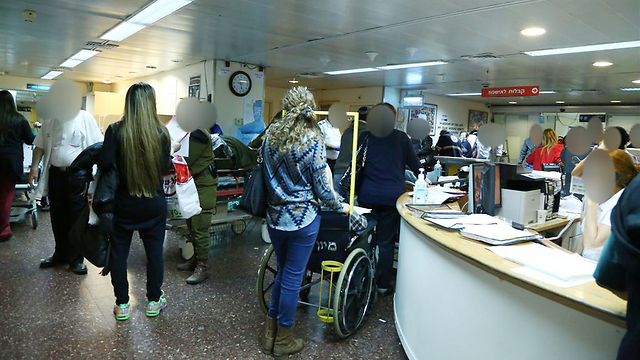
Israel invests less than half of OECD average on healthcare
Bank of Israel report finds low public investment, funneling of funds to private institutions.
The Bank of Israel noted these to be a result of low public investment and the funneling of funds out of public health care to private institutions. The report noted that the rate of public investment in the healthcare system in Israel was more than half in 1995 but dropped to a mere third by 2006, indicating how much the private health sector has grown in the last 20 years.
The rate of investment has risen since 2007, but the majority of the funds originated from private sources, including donations from Israel and abroad, income from the business sector, and profits of healthcare providers and government hospitals.
Another worrying trend: From 2008 to 2010, almost a quarter of all investments in medical centers was transferred to private hospitals.
In 2011, Israel invested some 2.5 billion shekels in "fixed assets" for the healthcare system, like facilities and medical devices. The rate of investment has been decreasing in recent years, from 4.3 percent in the past decade to 3.3 percent today – leaving Israel trailing far behind its Western cohorts.
In 2010, the per capita investment in healthcare in Israel stood at $71, almost half of the OECD average of $139.
The Bank of Israel report said that "the low investment may reflect a decision by the policy makers: It is possible they prefer to maintain relatively-high efficiency and use limited wealth intensively, even at the cost of damaging the convenience to the residents."
The report's authors further note that the relatively-low investment in the healthcare system is possible because of the government's tight grip on investments in the sector: the government routs the funds from the state budget, approves the healthcare provider's development plans, requires approval for any construction or expansion of hospitals, and demands licenses for specialized medical devices like MRI and CT machines.
The report emphasizes that the overwhelming bureaucracy damages the quality of service offered to Israelis.
The expected shortage in qualified medical personnel will make handling these challenges more difficult in the future. This shortage reflects low investment in training doctors, and necessitates the development of new frameworks for training.
Hospitals in Israel's periphery towns, according to the report, are severely underfunded. The Bank of Israel report explains that the hospitals split the state budget according to their volume of activity – the large hospitals in the center of Israel receive more funding, especially from the healthcare providers.












